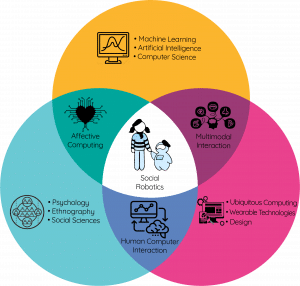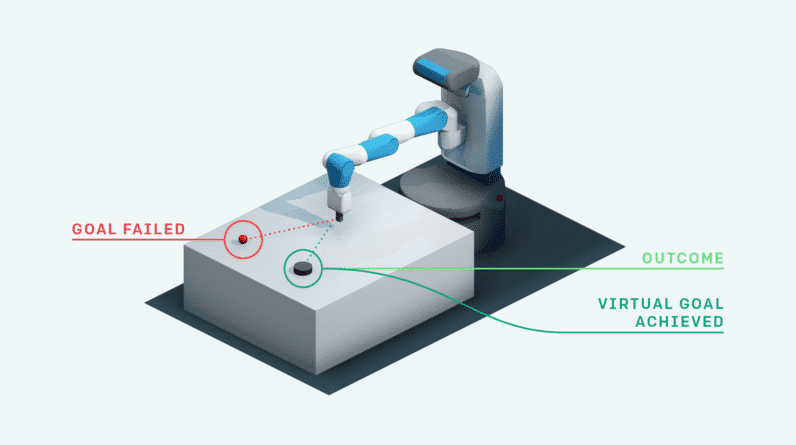In the article “AI For Climate Change: Leveraging Technology To Tackle Environmental Challenges,” you will discover how artificial intelligence (AI) is being used as a powerful tool to address the pressing issue of climate change. With its ability to analyze vast amounts of data and make predictions, AI is transforming the way we gather information, develop sustainable solutions, and mitigate the effects of global warming. By harnessing technology and leveraging AI’s capabilities, we have the potential to revolutionize our approach to environmental challenges and create a more sustainable future for generations to come.

Understanding AI
Defining artificial intelligence
Artificial intelligence, commonly referred to as AI, is a branch of computer science that focuses on creating intelligent machines capable of performing tasks that typically require human intelligence. These tasks include learning, reasoning, problem-solving, perception, and language understanding. AI systems are designed to mimic human intelligence by analyzing and interpreting data, learning from experience, and adapting to new situations.
The application of AI in various industries
Artificial intelligence has revolutionized a wide range of industries, from healthcare and finance to transportation and agriculture. In healthcare, AI is used to diagnose diseases, predict patient outcomes, and develop personalized treatment plans. In finance, AI algorithms are employed to detect fraud, analyze market trends, and automate trading processes. In transportation, AI powers autonomous vehicles and improves traffic management. Similarly, AI is revolutionizing agriculture by enabling precision farming techniques, optimizing crop yields, and reducing resource waste. The applications of AI are diverse and constantly expanding, bringing significant advancements to numerous sectors.
AI’s potential in solving complex problems
One of the key strengths of artificial intelligence lies in its potential to solve complex problems that are often beyond the capabilities of human beings. AI algorithms can analyze vast amounts of data, identify patterns, and make predictions with remarkable accuracy. This ability enables AI to address challenges such as climate change, which require comprehensive analysis of extensive data sets and the ability to identify effective solutions. By harnessing the power of AI, we can gain valuable insights into environmental issues, develop innovative strategies, and make informed decisions to tackle climate change effectively.
The Urgency of Addressing Climate Change
Current environmental challenges
Climate change poses a significant threat to our planet and humanity as a whole. Rising global temperatures, melting glaciers, and increasing frequency of extreme weather events are just some of the alarming consequences of climate change. These changes have devastating impacts on ecosystems, biodiversity, and human lives. It is crucial to understand the urgency of addressing climate change and take immediate actions to mitigate its effects.
The need for innovative solutions
Traditional approaches alone are insufficient to address the complex challenges posed by climate change. Innovative and transformative solutions are required to achieve sustainable development and reduce greenhouse gas emissions. These solutions must incorporate advanced technologies, scientific research, and collaboration among various stakeholders. Among these technologies, AI stands out as a powerful tool that can contribute immensely to tackling climate change, offering new pathways for innovative solutions.
The role of technology in addressing climate change
Technological advancements play a vital role in addressing climate change. Technology provides us with the means to monitor, analyze, and respond to environmental changes effectively. Moreover, technology offers sustainable alternatives and solutions to existing practices that contribute to climate change. By integrating advanced technologies like AI into our efforts to combat climate change, we can enhance our understanding, strategize more effectively, and implement sustainable practices for a greener future.

Harnessing AI for Climate Change Solutions
AI-powered analysis and prediction
AI excels in analyzing massive data sets and extracting valuable insights. By applying AI algorithms to climate data, patterns and trends can be identified, facilitating accurate predictions and forecasts. AI-powered analysis allows for more precise climate projections, enabling policymakers, scientists, and organizations to make informed decisions and design effective strategies. This empowers us to develop robust climate change models, understand the dynamics of our changing environment, and prepare for the future.
Improving climate models with AI
Traditional climate models rely on complex mathematical equations to simulate and predict climate patterns. However, these models often face limitations due to the inherent complexities and uncertainty associated with the Earth’s climate system. AI offers a new approach by utilizing machine learning algorithms to refine and improve climate models. By learning from historical climate data and incorporating real-time observations, AI algorithms can enhance the accuracy and reliability of climate models, allowing for more comprehensive climate projections and informed decision-making.
Monitoring and managing natural resources
AI can greatly assist in monitoring and managing natural resources, which are crucial for both climate change mitigation and adaptation efforts. Through satellite imagery, remote sensing technologies, and advanced data analysis, AI can provide real-time information on the state of forests, oceans, and wildlife habitats. This data can help in detecting deforestation, assessing biodiversity loss, and identifying areas in need of conservation efforts. By leveraging AI, we can take proactive measures to protect and sustainably manage our natural resources, ensuring their resilience in the face of climate change.
Efficient energy management through AI
Energy consumption and production are significant contributors to greenhouse gas emissions, making efficient energy management crucial in our fight against climate change. AI can play a vital role in optimizing energy systems, improving efficiency, and promoting the integration of renewable energy sources into the grid. By analyzing energy consumption patterns, AI algorithms can identify opportunities for energy conservation and recommend strategies for optimizing energy usage. Additionally, AI can enable smart grid management, facilitating the seamless integration of renewable energy sources and increasing the overall efficiency of energy distribution networks.
AI in Climate Change Mitigation
Reducing greenhouse gas emissions
Greenhouse gas emissions are the primary drivers of climate change, and reducing them is essential in mitigating its effects. AI can contribute significantly to this goal by analyzing large-scale emissions data, identifying emission patterns, and recommending strategies for emission reduction. AI-powered systems can optimize industrial processes, transportation systems, and energy production, helping industries and governments make decisions that result in reduced emissions and increased sustainability. By harnessing AI’s potential, we can accelerate the transition to a low-carbon economy and combat climate change effectively.
Optimizing renewable energy sources
Renewable energy sources, such as solar and wind power, are essential components of a sustainable energy future. However, the intermittent nature of these energy sources presents challenges in their integration into existing energy grids. AI can assist in overcoming these challenges by optimizing the generation, storage, and distribution of renewable energy. By analyzing weather patterns, energy demand, and grid conditions, AI algorithms can predict renewable energy generation and consumption, enabling efficient energy management and seamless integration of renewables into existing energy systems.
Improving energy efficiency
Improving energy efficiency is a vital aspect of addressing climate change. AI can contribute to this objective by analyzing energy usage patterns, identifying inefficiencies, and recommending energy-saving measures. Smart home systems powered by AI algorithms can optimize energy consumption by adjusting lighting, heating, and cooling based on occupancy patterns. Additionally, AI can be applied to industrial processes and transportation systems to identify areas of energy wastage and propose solutions for improvement. By embracing AI-driven energy efficiency measures, we can significantly reduce energy consumption and lower our carbon footprint.

AI for Climate Change Adaptation
Enhancing resilience and disaster management
As climate change leads to more frequent and severe weather events, enhancing resilience and disaster management becomes crucial. AI can be leveraged to analyze historical and real-time weather data, predict extreme weather events, and assess their potential impacts. This information can help communities and authorities prepare for disasters, evacuate vulnerable areas, and allocate resources effectively. Additionally, AI-powered systems can contribute to post-disaster recovery efforts by aiding in damage assessment, resource allocation, and reconstruction planning. By utilizing AI for climate change adaptation, we can enhance our ability to withstand and recover from the impacts of climate-related disasters.
Predicting and mitigating extreme weather events
AI’s predictive capabilities can play a vital role in mitigating the adverse effects of extreme weather events. By analyzing historical climate data, monitoring weather patterns, and utilizing machine learning algorithms, AI can predict the likelihood and severity of extreme weather events such as hurricanes, floods, and droughts. These predictions enable early warning systems to be put in place, allowing communities to take preventive measures and mitigate potential damages. By utilizing AI for weather prediction and mitigation, we can save lives, protect infrastructure, and reduce the economic impacts of extreme weather events.
Assisting in urban planning and infrastructure development
As the global population continues to urbanize, it becomes essential to plan and develop resilient cities and infrastructure that can withstand the impacts of climate change. AI can assist in this process by analyzing data on urban growth, population density, and climate patterns. By analyzing this data, AI algorithms can provide insights into optimal urban planning and infrastructure development strategies. This includes identifying areas prone to flooding, recommending green infrastructure solutions, and optimizing transportation systems to reduce carbon emissions. By integrating AI into urban planning efforts, we can create sustainable and climate-resilient cities that are better prepared for the challenges of the future.
Challenges and Limitations of AI in Climate Change
Data availability and quality
AI relies heavily on data for training and analysis. However, regarding climate change, there are challenges related to data availability and quality. Climate-related data is often incomplete, fragmented, or not easily accessible. Additionally, variability in data collection methods and sources can result in inconsistencies and biases. Addressing these challenges requires standardization of data collection methods, establishment of data sharing agreements, and efforts to ensure the quality and reliability of climate data. By overcoming these limitations, AI can be harnessed more effectively to tackle climate change challenges.
Ethical considerations and bias in AI algorithms
AI algorithms are developed based on historical data, which may contain biases and reflect societal inequalities. Deploying biased algorithms in climate change solutions can perpetuate these biases and exacerbate social and environmental injustices. It is crucial to ensure that AI algorithms used in climate change applications are ethically developed, tested, and deployed. Efforts must be made to address bias, promote algorithmic transparency, and incorporate diverse perspectives in the development and deployment processes. By prioritizing ethical considerations, we can harness the full potential of AI while minimizing unintended negative consequences.
Adoption barriers and policy implications
The widespread adoption of AI in climate change applications faces several barriers, including financial constraints, lack of technical expertise, and a shortage of supportive policies and regulations. Overcoming these barriers requires investments in AI research and development, knowledge sharing, and capacity building. Governments and policymakers also play a vital role in facilitating the integration of AI into climate change strategies by implementing supportive policies, providing funding, and ensuring ethical guidelines are in place. Collaboration between public and private sectors is crucial in overcoming these barriers and harnessing the transformative power of AI in addressing climate change.

Collaboration and Partnerships for AI Solutions
Academic and research collaborations
Academic and research collaborations provide a crucial foundation for advancing AI solutions for climate change. Collaboration between universities, research institutions, and AI experts can foster innovation, knowledge sharing, and research breakthroughs. By pooling resources, expertise, and data, these collaborations can drive advancements in AI technology and its applications in climate change mitigation and adaptation. Furthermore, cross-disciplinary collaborations that bring together experts from various fields, including climate science, computer science, and policy, can ensure holistic and comprehensive approaches to solving climate change challenges.
Public-private partnerships
Public-private partnerships bring together the strengths of both sectors to address complex challenges like climate change. Collaboration between governments, private companies, and non-profit organizations allows for the sharing of resources, expertise, and knowledge. Such partnerships can foster the development and deployment of AI technologies for climate change solutions. Governments can provide regulatory frameworks and funding support, while private companies can contribute technological expertise and resources. By working together, the public and private sectors can accelerate the development and implementation of AI-enabled solutions to combat climate change.
International cooperation and knowledge sharing
Climate change is a global challenge that requires international cooperation and knowledge sharing. Collaboration among countries, international organizations, and research institutions is essential to tackle the collective nature of climate change. By sharing expertise, best practices, and data, countries can learn from one another and accelerate the development and deployment of AI solutions for climate change. International collaboration can also promote the transfer of technology to developing countries, ensuring that all nations have access to AI tools and expertise to address climate change effectively.
Examples of AI Applications in Climate Change
Remote sensing and satellite data analysis
Remote sensing technologies, such as satellite imagery, play a crucial role in monitoring and understanding climate change. AI can enhance the analysis of satellite data by automating image processing, identifying changes in land cover and vegetation, and detecting environmental anomalies. These capabilities enable the monitoring of deforestation, tracking changes in ice caps and glaciers, and assessing the health of ecosystems. By leveraging AI in remote sensing, we can gather valuable data for climate change research and develop targeted interventions to mitigate its impacts.
Climate risk assessment and adaptation planning
AI can support climate risk assessment and adaptation planning by analyzing climate data and assessing vulnerabilities. Machine learning algorithms can identify high-risk areas prone to climate hazards such as flooding, sea-level rise, and wildfires. By integrating socioeconomic data, AI can also identify vulnerable communities and resources that require targeted adaptation measures. This information can help policymakers and planners develop effective adaptation strategies, allocate resources efficiently, and prioritize investments in resilient infrastructure.
Smart grid management for renewable integration
Integrating renewable energy sources into the existing power grid is a crucial aspect of transitioning to a low-carbon economy. AI can optimize the management of smart grids by analyzing real-time data on energy production, consumption, and grid conditions. By predicting energy demand and supply, AI algorithms can ensure the efficient utilization of renewable energy while maintaining grid stability. Furthermore, AI can assist in demand response programs, enabling consumers to adjust their energy consumption based on real-time pricing and availability of renewable energy. Smart grid management powered by AI can facilitate the seamless integration of renewable energy, reducing reliance on fossil fuels and mitigating climate change.

AI Ethics and Sustainable Development
Ensuring responsible use of AI
As AI becomes more prevalent in climate change solutions, it is essential to ensure its responsible and ethical use. Ethical considerations should be integrated into every stage of AI development and deployment, from the design of algorithms to the implementation of AI systems. Transparency, accountability, and fairness should guide the development of AI technologies to prevent unintended negative consequences. Guidelines and regulations must be established to govern the use of AI in climate change applications, addressing issues such as privacy, data security, and algorithmic bias. By prioritizing ethics, we can leverage AI’s potential while safeguarding social and environmental well-being.
Impacts on employment and social equity
The widespread adoption of AI in climate change solutions may have implications for employment and social equity. While AI can bring about efficiencies and advancements, it may also result in job displacement and exacerbate inequalities. It is crucial to consider the social impacts of AI and ensure that the benefits of AI-powered solutions are distributed equitably. This includes implementing measures such as retraining programs for displaced workers and promoting inclusive access to AI technologies. By addressing these challenges, we can ensure that AI contributes to sustainable development and promotes social equity.
AI’s role in achieving Sustainable Development Goals
Artificial intelligence has the potential to contribute significantly to achieving the Sustainable Development Goals (SDGs) outlined by the United Nations. By harnessing AI for climate change solutions, we can directly contribute to SDG 13: Climate Action. AI enables us to monitor and analyze environmental data, develop climate models, and implement innovative solutions for climate change mitigation and adaptation. Furthermore, AI can have indirect impacts on other SDGs, such as SDG 7: Affordable and Clean Energy, by optimizing energy systems and promoting renewable energy integration. By leveraging AI to address climate change, we can make significant progress towards achieving the SDGs and creating a more sustainable future.
Future Directions and Opportunities
Advancements in AI technology for climate solutions
The field of AI is rapidly evolving, with new advancements and innovations emerging regularly. Future advancements in AI technology, such as improvements in machine learning algorithms, natural language processing, and computer vision, will further enhance its capabilities for climate change solutions. These advancements will enable more accurate predictions, faster data analysis, and more efficient decision-making. Continued research and development in AI technology will unlock new opportunities for addressing climate change and lead to increasingly effective and impactful solutions.
Integration of AI with IoT and big data analytics
The integration of AI with the Internet of Things (IoT) and big data analytics holds immense potential for climate change solutions. By combining AI algorithms with data collected from IoT devices and big data analytics platforms, we can gain deeper insights into environmental processes, optimize resource management, and develop real-time monitoring systems. The synergy between AI, IoT, and big data analytics enables the development of interconnected systems that can autonomously respond to climate change challenges. This integration opens up new avenues for innovation, efficiency, and sustainability in climate change mitigation and adaptation efforts.
Investment and funding opportunities in AI for climate change
The urgency and importance of tackling climate change present significant investment and funding opportunities in AI. Governments, private organizations, and philanthropic institutions can invest in research and development of AI technologies, support startups and initiatives focused on AI for climate change solutions, and provide funding for collaborative projects. Investments in AI can not only drive technological advancements but also yield substantial social, environmental, and economic benefits. By channeling investments and funding into AI for climate change, we can leverage the potential of AI and accelerate progress towards a sustainable and resilient future.
In conclusion, AI has emerged as a powerful tool in tackling climate change. Its ability to analyze vast amounts of data, make accurate predictions, and optimize resource management makes it an invaluable asset in our efforts to combat climate change. By harnessing AI’s potential, we can develop innovative solutions, enhance climate models, optimize energy systems, and strengthen our resilience to climate-related disasters. However, realizing the full potential of AI in addressing climate change requires overcoming challenges such as data availability, ethical considerations, and adoption barriers. Collaboration and partnerships, both domestic and international, are key to unlocking AI’s transformative power and driving sustainable development. By embracing AI for climate change, we can pave the way for a greener, more sustainable future for generations to come.






